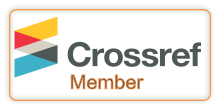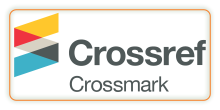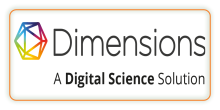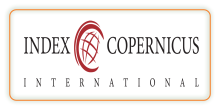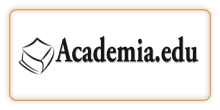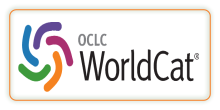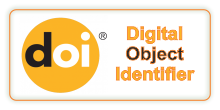TOURISTS' PERCEPTION ABOUT TOUR DESTINATION POST COVID- 19 PANDEMIC IN BANGLADESH: AN INVESTIGATION OF KNOWLEDGE, TRANSPORTATION FACILITIES, SOCIAL MEDIA AND WEATHER IMPACTS
DOI:
https://doi.org/10.29121/granthaalayah.v13.i4.2025.6001Keywords:
Tourists’ Perception, COVID-19 Pandemic, PLS-SEM Approach, Social MediaAbstract [English]
Tourism has become an important global economic and leisure activity due to its growing acceptance and benefits. This study investigates the impact of content cues of tourists’ perception on tourist well-being to provide on understanding of how destination attributes influence tourists’ perception. The purpose of the research was to investigate tourists’ perception towards tourists’ destination post the COVID-19 pandemic in the context of Bangladeshi consumers. Quantitative type research was applied and the study used descriptive research design. A standardized questionnaire was used to collect 210 data from Bangladeshi consumers of different destinations, residents in a few geographical areas like Khulna, Jashore, Cox's Bazar, Chattagram, Cumilla and Sylhet using purposive sampling method. A partial least square structured equation modeling (PLS-SEM) approach was used to evaluate the data and test the hypotheses.PLS-SEM analysis method demonstrated that tourists' knowledge and social media had a positive significant impact on tourists’ perception towards tourists’ destination post the COVID-19 pandemic in the perspective of Bangladesh.
The research paper provides practical guidelines for tourism industry on how to effectively provide better services to tourists. This study could provide new insights about how competitiveness could be improved by examining the affecting factors (tourists' knowledge, transportation facilities, social media and weather) development impacts.
Downloads
References
Agarwal, V. B., & Yochum, G. R. (1999). Tourist Spending and Race of Visitors. Journal of Travel Research, 38(2), 173-176. https://doi.org/10.1177/004728759903800211 DOI: https://doi.org/10.1177/004728759903800211
Alegre, J., & Garau, J. (2010). Tourist Satisfaction and Dissatisfaction. Annals of Tourism Research, 37(1), 52-73. https://doi.org/10.1016/j.annals.2009.07.001 DOI: https://doi.org/10.1016/j.annals.2009.07.001
Artuger, S. (2015). The Effect of Risk Perception on Tourists' Revisit Intentions. European Journal of Business and Management, 7(2), 36-43.
Becken, S. (2013). Developing a Framework for Assessing Resilience of Tourism Sub-Systems to Climatic Factors. Annals of Tourism Research, 43, 506-528. https://doi.org/10.1016/j.annals.2013.06.002 DOI: https://doi.org/10.1016/j.annals.2013.06.002
Begum, M., Farid, M. S., Alam, M. J., & Balua, S. (2020). COVID-19 and Bangladesh: Socio-Economic Analysis Towards the Future Correspondence. Asian Journal of Agricultural Extension, Economics & Sociology, 1, 143-155. https://doi.org/10.9734/ajaees/2020/v38i930417 DOI: https://doi.org/10.9734/ajaees/2020/v38i930417
Cho, C. L. T., Kang, J., & Cheon, L. T. (2006). Online Shopping Hesitation. Cyberpsychology & Behavior, 9, 261-274. https://doi.org/10.1089/cpb.2006.9.261 DOI: https://doi.org/10.1089/cpb.2006.9.261
Chung, N., & Koo, C. (2015). The Use of Social Media in Travel Information Search. Telematics and Informatics, 32(2), 215-229. https://doi.org/10.1016/j.tele.2014.08.005 DOI: https://doi.org/10.1016/j.tele.2014.08.005
Cohen, N. J., & Squire, L. R. (1980). Preserved Learning and Retention of Pattern-Analyzing Skill in Amnesia: Dissociation of Knowing how and Knowing that. Science, 210(4465), 207-210. https://doi.org/10.1126/science.7414331 DOI: https://doi.org/10.1126/science.7414331
Dong dong, Z., Hongyi, L., Hongyu, Z., et al. (2011). Impact of COVID-19 on Urban Energy Consumption of Commercial Tourism City. Sustainable Cities and Society, 73*(October), 103133. https://doi.org/10.1016/j.scs.2021.103133 DOI: https://doi.org/10.1016/j.scs.2021.103133
Downward, P., & Lumsdon, L. (2004). Tourism Transport and Visitor Spending: A Study in the North York Moors National Park, UK. Journal of Travel Research, 42(4), 415-420. https://doi.org/10.1177/0047287504263038 DOI: https://doi.org/10.1177/0047287504263038
Echtner, C. M., & Ritchie, J. R. B. (1991). The Meaning and Measurement of Destination Image. Journal of Tourism Studies, 2(2), 2-12.
Font, F. I., & Luis, M. G. (2014). Consumer Preference, Behavior, and Perception About Meat and Meat Products: An Overview. Meat Science, 98(3), 361-371. https://doi.org/10.1016/j.meatsci.2014.06.025 DOI: https://doi.org/10.1016/j.meatsci.2014.06.025
Freitas, D. R. C. (2014). Weather and Place-Based Human Behavior: Recreational Preferences and Sensitivity. International Journal of Biometeorology, 59(1), 55-63. https://doi.org/10.1007/s00484-014-0824-6
Freitas, D. R. C. (2014). Weather and Place-Based Human Behavior: Recreational Preferences and Sensitivity. International Journal of Biometeorology, 59(1), 55-63. https://doi.org/10.1007/s00484-014-0824-6 DOI: https://doi.org/10.1007/s00484-014-0824-6
Geoffrey, C. I., Harmen, O., Twan, H., & Sara, D. (2007). Discretionary Expenditure and Tourism Consumption: Insights from a Choice Experiment. Journal of Travel Research, 45(3), 4-14. https://doi.org/10.1177/0047287506295912 DOI: https://doi.org/10.1177/0047287506295912
Glenn, R. F. (1994). Service Quality Ideals Among Hospitality Industry Employees. Tourism Management, 15(4), 273-280. https://doi.org/10.1016/0261-5177(94)90044-2 DOI: https://doi.org/10.1016/0261-5177(94)90044-2
Gregory, H. J., Julien, G. E., Steig, J. E., et al. (2016). The Last Millennium Climate Reanalysis Project: Framework and First Results. Journal of Geophysical Research: Atmospheres, 121, 6745-6764. https://doi.org/10.1002/2016JD024751 DOI: https://doi.org/10.1002/2016JD024751
Jahoda, M., Deutsch, M., & Cook, S. (1951). Research Methods in Social Relations. Dryden Press.
Jelmer, J. H. G., & Karin, P. B. M. (2013). The Influence of Weather on Tourist Experiences: Analyzing Travel blog narratives. SAGE Journals, 19(3), 209-219. https://doi.org/10.1177/1356766712457104 DOI: https://doi.org/10.1177/1356766712457104
Kanon, D., & Kim, L. (2003). Transport and Tourism in Hawaii: Computable General Equilibrium model. Journal of the Transportation Research Board, 1839(January), 142-149. https://doi.org/10.3141/1839-16 DOI: https://doi.org/10.3141/1839-16
Khadaroo, J., & Seetnah, B. (2007). Transport Infection and Tourism Development. Annals of Tourism Research, 34(4), 21-31. https://doi.org/10.1016/j.annals.2007.05.010 DOI: https://doi.org/10.1016/j.annals.2007.05.010
Kim, H. W., Gupta, S., & Koh, J. (2011). Investigating the Intention to Purchase Digital Items in Social Networking Communities: A Customer Value Perspective. Information & Management, 48(6), 228-234. https://doi.org/10.1016/j.im.2011.05.004 DOI: https://doi.org/10.1016/j.im.2011.05.004
Kogo, B. K., Kumar, L., & Koech, R. (2020). Climate Change and Variability in Kenya: A Review of Impacts on Agriculture and Food Security. Environment, Development and Sustainability, 23, 1-21. https://doi.org/10.1007/s10668-020-00589-1 DOI: https://doi.org/10.1007/s10668-020-00589-1
Leung, D., Law, R., Van Houf, H., & Buhalis, D. (2013). Social Media in Tourism and Hospitality: A Literature Review. Journal of Travel & Tourism Marketing, 30(1-2), 3-22. https://doi.org/10.1080/10548408.2013.750919
Leung, D., Law, R., Van Houf, H., & Buhalis, D. (2013). Social Media in Tourism and Hospitality: A literature Review. Journal of Travel & Tourism Marketing, 30 (1-2), 3-22. https://doi.org/10.1080/10548408.2013.750919 DOI: https://doi.org/10.1080/10548408.2013.750919
Liant, N. (2014). Social Media Marketing: Why is Social Media one of the Most Important Marketing Tools? Retrieved from [Quora].
Lu, W., & Stepchenkova, S. (2015). User-Generated Content as a Research Mode in Tourism and Hospitality Application: Topics, Methods, and Software. Journal of Hospitality Marketing & Management, 24(12), 119-154. https://doi.org/10.1080/19368623.2014.907758 DOI: https://doi.org/10.1080/19368623.2014.907758
Medina, L. K. (2003). Commoditizing Culture, Tourism, and Maya Identity. Annals of Tourism Research, 30(2), 353-368. https://doi.org/10.1016/S0160-7383(02)00099-3 DOI: https://doi.org/10.1016/S0160-7383(02)00099-3
Meher, N., Abu, R. O., & Mohammed, A. (2025). Moderating Effects of Energy Poverty for Sustainable Tourism, Policy, Innovation, and Environmental Resilience: Evidence from SEM-ANN approaches. Journal of Discover Sustainability, 6*(103), [Page Numbers]. https://doi.org/10.1007/s43621-025-00904-8 DOI: https://doi.org/10.1007/s43621-025-00904-8
Nathan, N., Ravi, D., & Norbert, S. (1996). The Effect of Decision Strategy in Deciding to Defer Choice. Journal of Behavioral Decision Making, 9(4), 265-281. https://doi.org/10.1002/(SICI)1099-0771(199612)9:4<265::AID-BDM231>3.3.CO;2-W DOI: https://doi.org/10.1002/(SICI)1099-0771(199612)9:4<265::AID-BDM231>3.0.CO;2-4
Noam, S., McKercher, B., et al. (2011). Hotel Location and Tourist Activity in Cities. Annals of Tourism Research, 38, 1594-1612. https://doi.org/10.1016/j.annals.2011.02.007 DOI: https://doi.org/10.1016/j.annals.2011.02.007
Robins, A. P., & Coulter, M. (2005). Tourism and COVID-19: Impacts and Implications for Advancing and Resetting Industry and Research. Journal of Business Research, 117(September).
Smith, W. H. (1939). Air Pollution and Forests: Interactions Between Air Contaminants and Forest Ecosystems. Springer-Verlag New York Heidelberg Berlin.
Tham, A., Glen, C., & Judith, M. (2013). Social Media in Destination Choice: Distinctive Electronic word-of-Mouth Dimensions. Journal of Travel & Tourism Marketing, 30(1-2), 144-155. https://doi.org/10.1080/10548408.2013.751272
Thom, A., Cory, G., & Mair, J. (2013). Social Media in Destination Choice: Distinctive Electronic Word-of-Mouth Dimensions. Journal of Travel & Tourism Marketing, 30(1-2), 144-155. https://doi.org/10.1080/10548408.2013.751272 DOI: https://doi.org/10.1080/10548408.2013.751272
Traylor, M. B. (1981). Product Involvement and bRand Commitment. Journal of Advertising Research. Retrieved from [Gadling].
Xiang, Z., & Gretzel, U. (2010). Role of Social Media in Online Travel Information Search. Tourism Management, 31(2), 179-188. Retrieved from [UNWTO]. https://doi.org/10.1016/j.tourman.2009.02.016
Zheng, X., & Gretzel, U. (2010). Role of Social Media in Online Travel Information Search. Tourism Management, 31, 179-188. https://doi.org/10.1016/j.tourman.2009.02.016 DOI: https://doi.org/10.1016/j.tourman.2009.02.016
Published
How to Cite
Issue
Section
License
Copyright (c) 2025 Meher Neger

This work is licensed under a Creative Commons Attribution 4.0 International License.
With the licence CC-BY, authors retain the copyright, allowing anyone to download, reuse, re-print, modify, distribute, and/or copy their contribution. The work must be properly attributed to its author.
It is not necessary to ask for further permission from the author or journal board.
This journal provides immediate open access to its content on the principle that making research freely available to the public supports a greater global exchange of knowledge.












